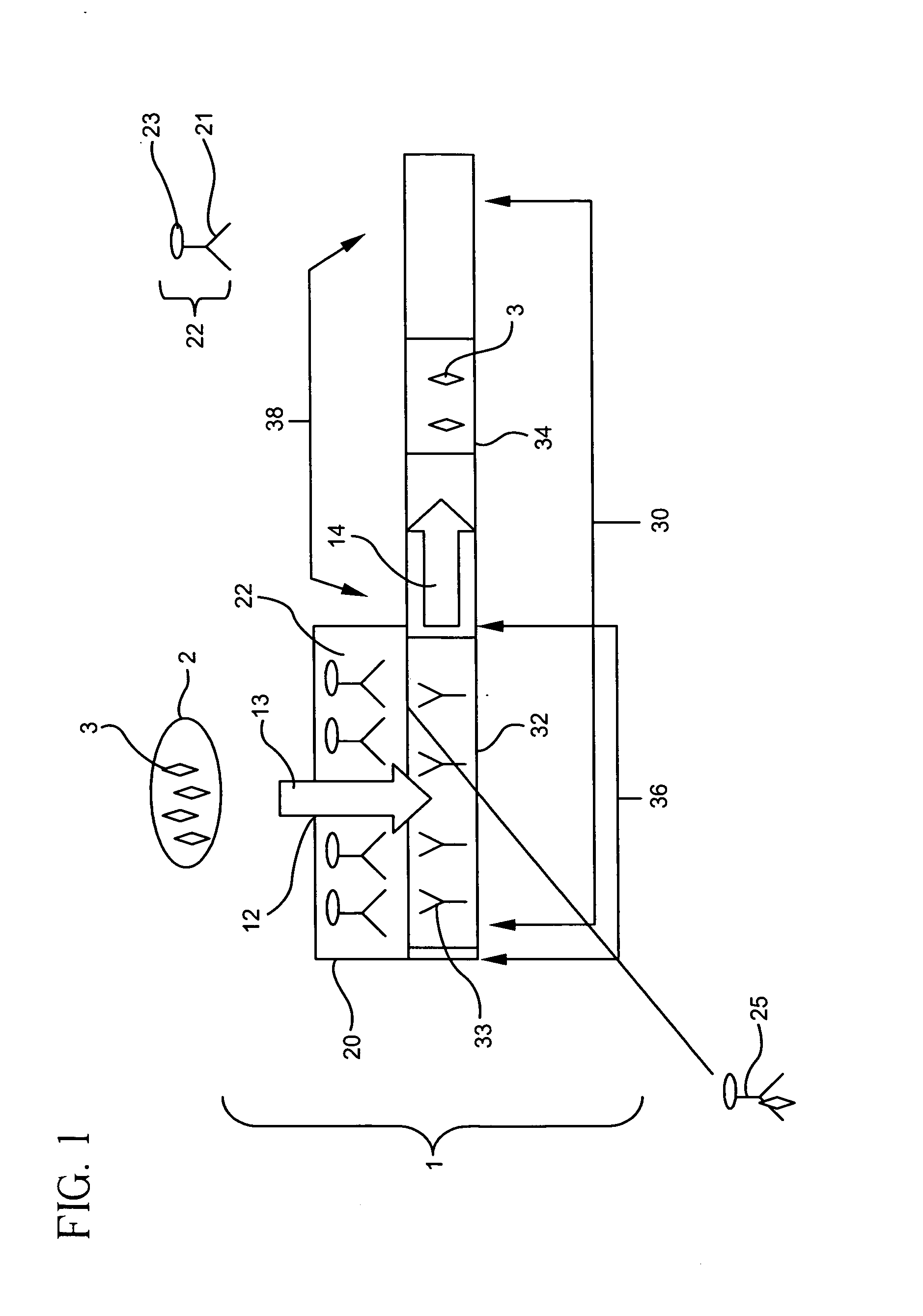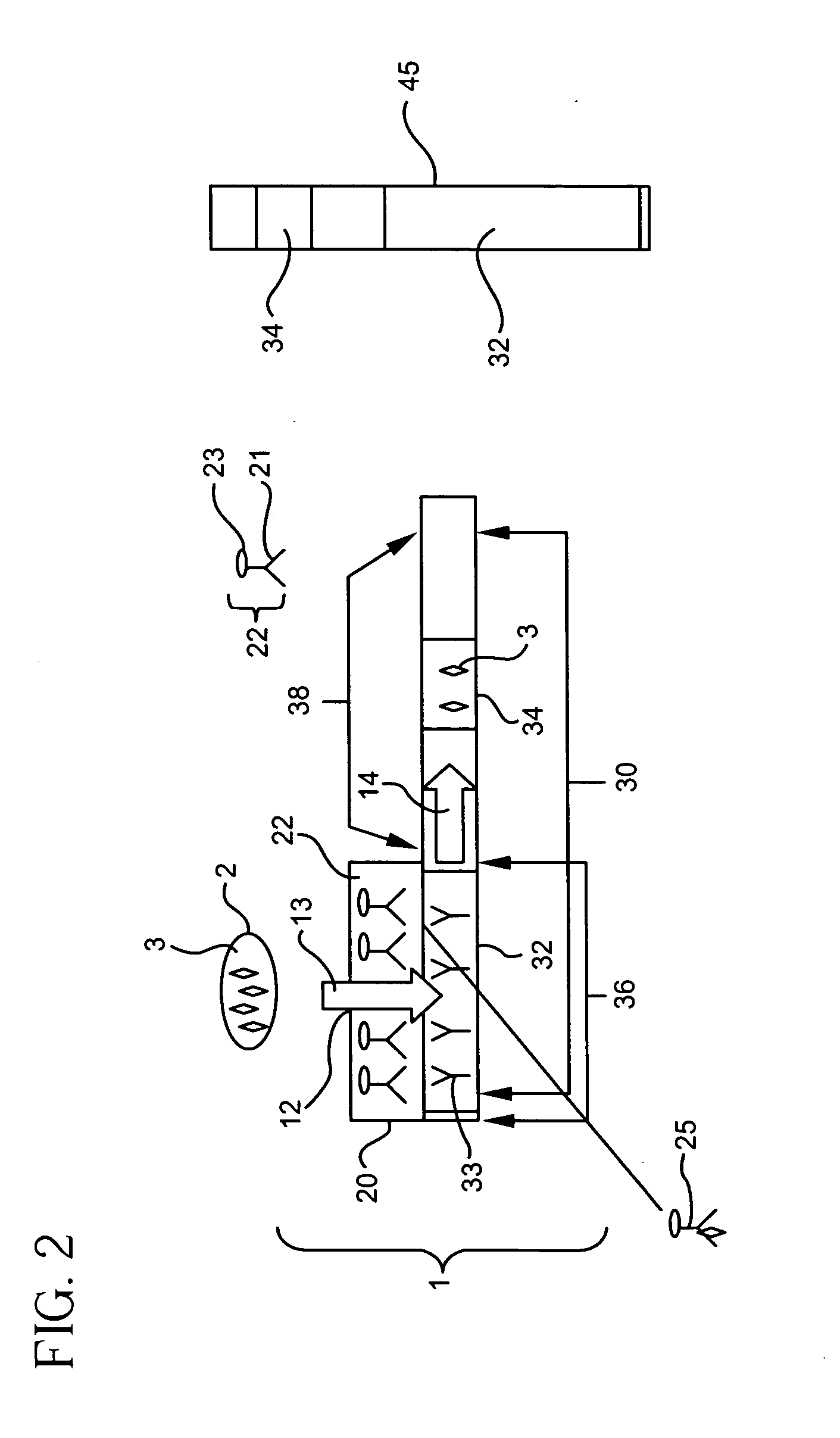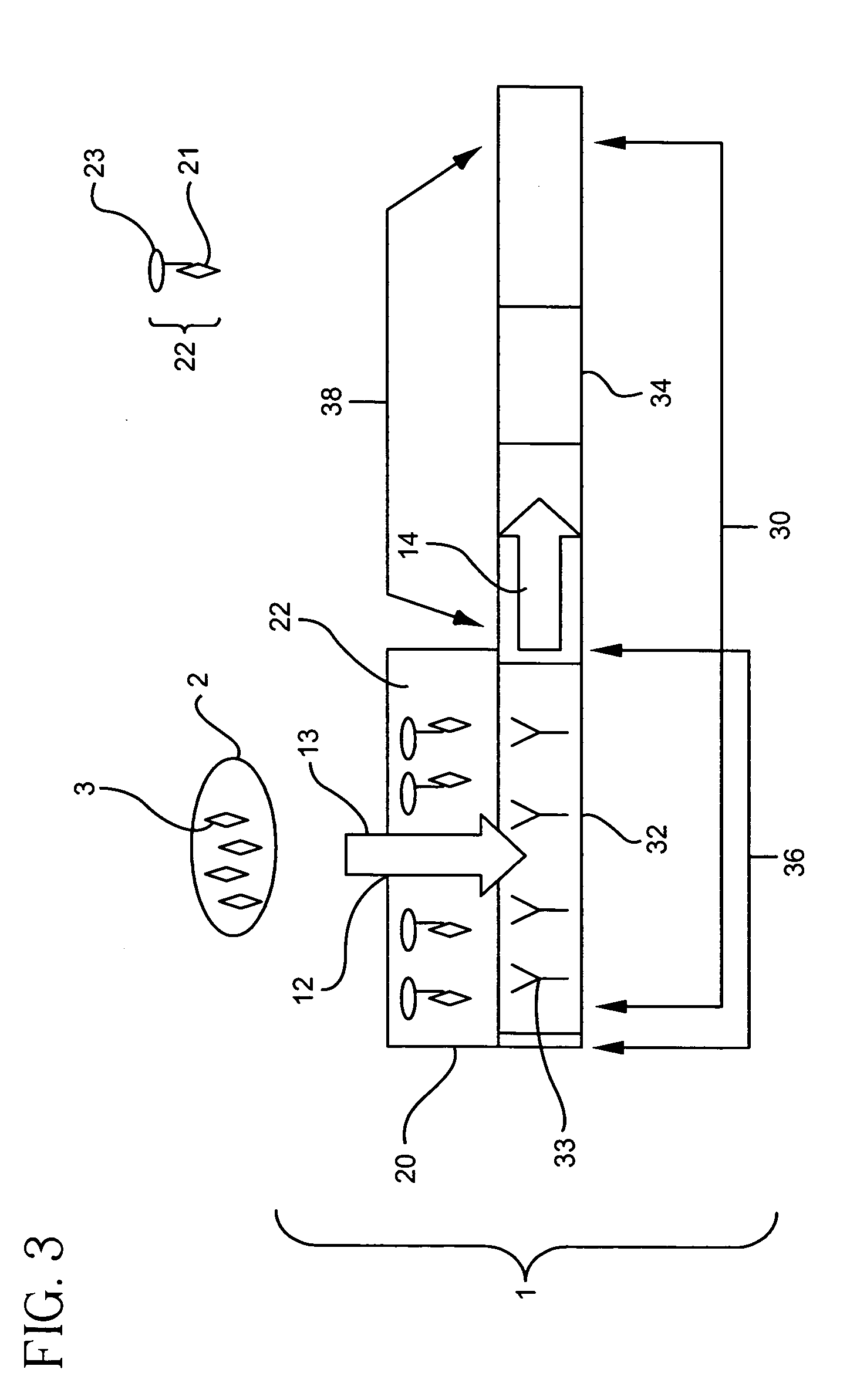Combination vertical and lateral flow immunoassay device
- Summary
- Abstract
- Description
- Claims
- Application Information
AI Technical Summary
Benefits of technology
Problems solved by technology
Method used
Image
Examples
example 1
[0146] a. Construction of Immunoassay Device
[0147] Immunoassay devices were constructed according to the present invention. In general, a tracer pad was placed directly on top of a binder support medium. The tracer pad was placed so that only a portion of the binder support medium was in direct contact with the tracer pad, leaving a portion of the binder support medium uncovered by the tracer pad. The tracer pad was placed directly over the portion of the binder support medium containing the detection zone. In addition, a sump pad was placed at the end of the binder support medium, allowing excess sample to flow from the binder support medium to the adjacent sump.
[0148]FIG. 16 is an overview of a representative schematic of the constructed immunoassay devices. Two immunoassay devices for the detection of a Respiratory Syncytial Virus (RSV) antigen were constructed. A nitrocellulose binder support medium 30 measuring 5.5×25 mm was removed from a Becton-Dickenson EZ RSV Kit (Catalog...
PUM
 Login to View More
Login to View More Abstract
Description
Claims
Application Information
 Login to View More
Login to View More - R&D
- Intellectual Property
- Life Sciences
- Materials
- Tech Scout
- Unparalleled Data Quality
- Higher Quality Content
- 60% Fewer Hallucinations
Browse by: Latest US Patents, China's latest patents, Technical Efficacy Thesaurus, Application Domain, Technology Topic, Popular Technical Reports.
© 2025 PatSnap. All rights reserved.Legal|Privacy policy|Modern Slavery Act Transparency Statement|Sitemap|About US| Contact US: help@patsnap.com



